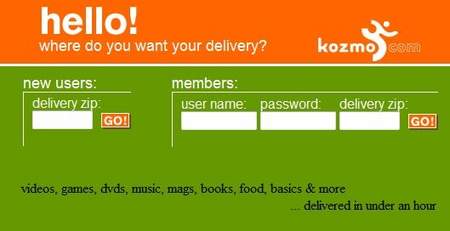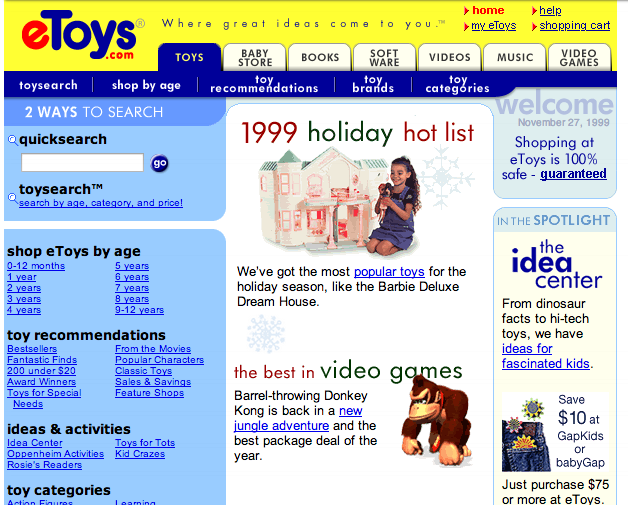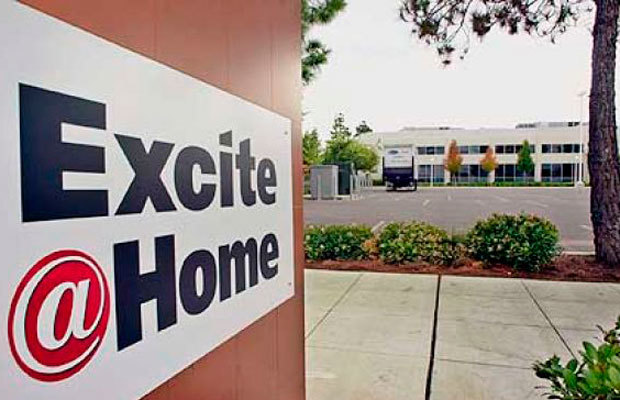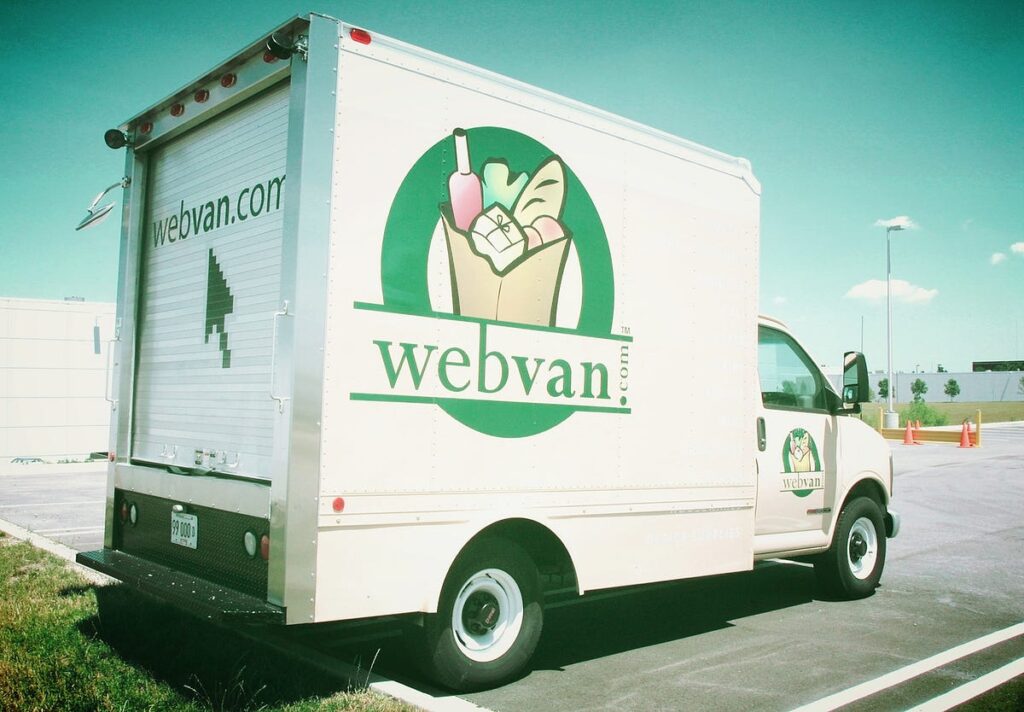1. Introduction – theGlobe.com
TheGlobe.com is one of the earliest examples of a social networking site and a poster child of the dot-com bubble’s irrational exuberance. Founded in 1995 by Cornell University students Stephan Paternot and Todd Krizelman, theGlobe.com was a social platform that allowed users to publish their own content, create communities, and interact online. It aimed to be a virtual reflection of users’ interests and personalities at a time when the concept of social media was still embryonic.

What made theGlobe.com historically significant wasn’t just its digital concept – it was its record-breaking IPO in November 1998, which saw its stock price surge 606% on the first day of trading, from an offer price of $9 to a close of $63.50. This remains one of the most explosive first-day stock performances in history. However, this meteoric rise was followed by an equally dramatic fall. The company never turned a profit, and by 2001, it had laid off the majority of its staff, pivoted away from its core model, and eventually dissolved into obscurity.
The story of theGlobe.com serves as a vital case study for understanding not just dot-com hubris, but also how timing, monetization, and execution are critical to transforming vision into viable, long-lasting businesses.
2. Company Background – theGlobe.com
Founders
Stephan Paternot and Todd Krizelman launched theGlobe.com in 1995 from their Cornell University dorm room. Inspired by early online bulletin boards and the social potential of the internet, they wanted to create an immersive, community-based platform.
Incorporation and Launch
The company was officially incorporated in 1995 and went live in 1996. It was among the first to offer a personalized homepage, topic-based forums, chat rooms, and the ability to create content – elements now commonplace in social media platforms.
Core Business Model
TheGlobe.com’s business model was built around creating user-generated communities. Revenue was initially intended to come from advertising and e-commerce partnerships, though these were poorly defined and implemented.
IPO
On November 13, 1998, the company held its IPO at $9 per share. By the end of the trading day, shares closed at $63.50, giving the company a valuation of nearly $840 million. This IPO attracted massive media attention and symbolized dot-com mania.
Offices and Workforce
The company expanded quickly, opening offices in New York and other major cities. At its peak, it employed over 400 people, many focused on content curation, tech development, and marketing.
3. Timeline of Key Events – theGlobe.com
| Date | Event |
|---|---|
| 1995 | Company founded by Paternot and Krizelman at Cornell University. |
| 1996 | theGlobe.com website launches to early acclaim among tech communities. |
| 1997 | Raises $20 million in venture capital; begins hiring aggressively. |
| Nov 1998 | Holds IPO; stock surges 606% on day one, setting record. |
| 1999 | Launches GlobeStore and acquires several niche content sites. |
| Late 1999 | Struggles to generate meaningful ad revenue; traffic plateaus. |
| 2000 | Dot-com market crashes; stock plummets below $1. |
| 2001 | Major layoffs; company pivots to gaming through acquisition of gaming services like GloPhone and VoiceGlo. |
| 2003 | theGlobe.com ceases social networking activities completely. |
| 2007 | CEO Stephan Paternot formally resigns. |
4. Financial Overview – theGlobe.com
| Metric | 1998 | 1999 | 2000 |
|---|---|---|---|
| Revenue | $1.5M | $4.5M | $7.8M |
| Net Loss | -$6.7M | -$19.6M | -$29.2M |
| Cash on Hand | $28M (post-IPO) | $14M | $2M |
| Market Cap | ~$840M (peak) | $100M | <$10M |
| Employees | ~150 | ~400 | <50 |
Despite its historic IPO, theGlobe.com never found a path to profitability. Ad revenue failed to grow as anticipated, and there was little product-market fit to drive e-commerce or content partnerships. The costs of running and moderating user content, maintaining servers, and marketing far outpaced revenue.
5. SWOT Analysis – theGlobe.com
| Strengths | Weaknesses | Opportunities | Threats |
|---|---|---|---|
| First mover in social networking | Poor monetization strategy | Expansion into gaming or telecom | Competitors like Yahoo! and AOL |
| Strong initial user base | High burn rate and negative margins | User behavior analytics | Ad market collapse after dot-com bust |
| IPO gave massive capital access | Leadership lacked experience | Subscription services | Shift in internet user habits |
The SWOT analysis makes it evident that theGlobe.com had promising initial assets—first-mover advantage, brand recognition, and cultural relevance – but suffered from weak internal controls, misaligned strategy, and market volatility.
6. Strategic Inflection Points and Decision Failures – theGlobe.com
Early Growth Decisions
- Aggressive Expansion Without Unit Economics: Kozmo launched in NYC and quickly expanded to 11 cities in under two years. However, the cost per delivery ($25+) consistently exceeded the average order value (~$15). This mismatch worsened at scale.
- No Minimum Order Size or Delivery Fee: While this appealed to users, it created an unsustainable cost burden for the company.
- Over-investment in Infrastructure: Instead of partnering with existing stores or logistics providers, Kozmo built its own warehouses and employed its own fleet, leading to high fixed costs.
Mid-Phase Strategic Missteps
- Failure to Monetize Customer Base: Kozmo didn’t implement loyalty programs, subscription models, or upselling strategies. When it later tried adding fees, customer backlash followed.
- Marketing vs. Operations Mismatch: Despite a $2M Super Bowl ad and Starbucks partnerships, backend tech (e.g., routing, inventory forecasting) lagged. Fulfillment issues undermined the brand.
- Lack of Differentiated Value Proposition: Kozmo offered generic products that could easily be bought from convenience stores or competitors. It did not offer curated products or exclusive SKUs.
Final-Stage Collapse
- IPO Withdrawal: The dot-com bubble burst just as Kozmo planned its IPO. Losing this funding lifeline hastened its collapse.
- Failure to Pivot or Retrench: Kozmo didn’t downsize early enough or attempt to sell its backend logistics as a service to other businesses.
- Zero Exit Value: Despite raising $280M, Kozmo’s liquidation fetched under $3M in asset value.
7. PESTEL Analysis – theGlobe.com
| Factor | Description | Kozmo.com’s Impact |
|---|---|---|
| Political | Minimal federal regulation of e-commerce in 1998–2000 | Allowed rapid growth without red tape but also no infrastructure support |
| Urban delivery regulations varied by city | High legal complexity and costs in scaling to new cities | |
| Economic | Dot-com era overflow of cheap venture capital | $280M in funding, but little pressure for early profitability |
| 2000–01 market crash post-NASDAQ peak | IPO cancelled; cash dried up; collapse ensued | |
| No external stimulus or rescue packages | Market correction hit startups hardest | |
| Social | Urban consumers starting to adopt convenience-based services | Found product-market fit in NYC and SF but not in all cities |
| Culture of “instant gratification” among millennials | Aligned with brand identity but user base had low purchasing power | |
| Technological | Pre-smartphone and pre-GPS era | Routing inefficiencies, desktop-only ordering system |
| No mature SaaS logistics or demand-forecasting platforms | Scaling was manual, error-prone, and inefficient | |
| Environmental | Sustainability concerns not yet mainstream | Model was environmentally taxing per unit (small orders, bike fleets) |
| Legal | Courier classification and employment regulations | Varied city-by-city; added risk and overhead |
| No consistent e-commerce tax rules | Made compliance complex across jurisdictions |
8. Strategic Failures – theGlobe.com
8.1 Flawed Unit Economics
Kozmo.com’s core offering—delivering small-ticket items like snacks and DVDs within one hour—came with massive hidden costs. The company promised no delivery fee and had no order minimum, which made each transaction fundamentally unprofitable.
- Average Order Value (AOV): Approximately $15
- Cost per Delivery: Over $25
- Result: Every transaction incurred a net loss.
Despite having control over its logistics, the business model failed to account for margins that could sustain scalability.
8.2 Aggressive Expansion
Instead of perfecting operations in one or two cities, Kozmo aggressively expanded into 11 major urban centers within two years.
- Infrastructure: Each city required new warehouses, fleets, and teams.
- Complexity: Managing real-time deliveries in each city stretched operational limits.
- Failure to Validate: No single city had proven sustainable profitability before expansion.
8.3 Lack of Customer Monetization
The startup failed to convert its strong brand and user base into sustainable revenue.
- Customer Expectations: Trained to expect free, fast delivery.
- Late Monetization: Delivery fees introduced too late.
- No Upsell Paths: No loyalty programs, premium memberships, or strategic bundling.
8.4 Underutilized Partnerships
Despite partnerships with Starbucks and investment from Amazon, Kozmo failed to capitalize on these opportunities.
- Starbucks: In-store kiosks didn’t translate to meaningful sales.
- Amazon: $60 million investment not leveraged for tech, logistics, or warehousing collaboration.
8.5 IPO Withdrawal
Kozmo had planned a major IPO in 2000, but the dot-com market crash forced a withdrawal.
- Burn Rate: Exceeded $30 million per quarter.
- Capital Crunch: No new funds led to mass layoffs.
- Collapse: IPO was Kozmo’s last major funding hope.
9. Collapse and Liquidation- theGlobe.com
9.1 Financial Breakdown
Despite raising $280 million in VC funding, Kozmo failed to generate a path to break-even.
- Quarterly Burn: $30 – 34 million.
- Cities Shut Down: Rapid retrenchment in early 2001.
- Employees: Over 1,100 laid off.
9.2 Closure
Kozmo officially ceased operations on April 3, 2001.
- Sudden Exit: Website taken offline immediately.
- No Buyer: Business model and tech stack deemed unviable.
9.3 Asset Liquidation
The liquidation process yielded minimal recovery.
| Metric | Value at Peak | Value at Closure |
|---|---|---|
| Cities Served | 11 | 0 |
| Employees | 1,100 | 0 |
| Average Daily Orders | 12,000 | ~1,800 |
| Funding Raised | $280M | – |
| Net Asset Liquidation | – | ~$3M |
9.4 Legacy Outcome
- Reputation: Became a symbol of dot-com failure.
- Lessons Learned: Cited in startup case studies for flawed scaling and monetization.
10. Strategic Legacy & Lessons – theGlobe.com
10.1 Validated Consumer Demand
Kozmo proved that urban consumers desired ultra-fast delivery, a trend that would become mainstream years later.
- Future Inspiration: Instacart, DoorDash, Amazon Prime Now.
10.2 Importance of Unit Economics
Startups that followed learned to charge fees, leverage gig labor, and use technology for optimization.
- Modern Examples: GoPuff, Uber Eats.
10.3 Expansion Strategy
Validated the need to test thoroughly before scaling.
- Lesson: Iterate and achieve profitability in one market before scaling.
10.4 Monetization Failure
Monetization was reactive, not proactive.
- Lesson: Build monetization mechanisms into the early roadmap.
10.5 VC Shift in Behavior
Post-Kozmo, investors became cautious of pure growth stories.
- Metrics: CAC, burn rate, LTV, and AOV became standard VC questions.
11. Post-Mortem Analysis and Industry Reflection – theGlobe.com
11.1 Infrastructure Limitations
Kozmo was ahead of its time in concept but behind in technology.
- Limitations: No GPS optimization, no smartphones, no real-time data systems.
11.2 E-commerce Paradigm Shift
The industry moved to treat logistics as a core capability post-Kozmo.
- Amazon’s Response: Accelerated its investment in last-mile systems.
11.3 Industry Impact
Asset-light logistics and third-party services gained popularity.
- New Entrants: ShipBob, Flexe, and other fulfillment platforms.
11.4 VC Perspective Change
The crash reoriented VC evaluation metrics.
- Brand ≠ Value: Strong branding was no longer enough.
11.5 Kozmo’s Role in Evolution
Despite failure, it paved the way for a generation of smarter, tech-enabled delivery platforms.
- Legacy: A cautionary tale, but also a visionary model.
12. Comparison with Other Dot-Com Failures – theGlobe.com
| Company | Key Failure | Comparison to Kozmo |
|---|---|---|
| Pets.com | High shipping costs, poor margins | Similar low-margin per-order losses |
| Webvan | Infrastructure investment before demand | Like Kozmo, overbuilt before proving model |
| eToys | Seasonal model mismatch | Kozmo failed to adjust for operational rhythms |
| Flooz, Beenz | No real utility or value proposition | Kozmo had real demand but no monetization |
| Boo.com | Spent big on tech, failed to convert users | Both focused on brand/image without backend resilience |
13. Broader Lessons for E-commerce Startups – theGlobe.com
13.1 Scaling a Broken Model Doesn’t Work
- Startups must fix profitability at the unit level first.
- Growth exacerbates flaws without sustainable margins.
13.2 Holistic Customer Experience
- Delivery speed is just one factor.
- Accuracy, returns, packaging, and support matter too.
13.3 Monetization Strategies
- Free is a hook, not a strategy.
- Subscriptions, rewards, and bundling drive LTV.
13.4 Strategy Over Capital
- Capital helps but cannot replace a clear roadmap.
- Iterate with feedback loops; avoid premature scaling.
13.5 Timing and Infrastructure Readiness
- Market readiness matters.
- Kozmo launched in a pre-mobile, pre-GPS world.
13.6 Managing Investor Expectations
- Be transparent about CAC, burn rate, and monetization.
- IPO ambitions require real fundamentals.
13.7 Final Takeaway
- Kozmo’s ashes fertilized leaner, smarter, profitable startups.
- It pioneered what would later be perfected by giants in logistics and e-commerce.
14. Summary – theGlobe.com
Kozmo.com stands as one of the most emblematic failures of the dot-com bubble era, an ambitious startup that captured early investor excitement but ultimately fell victim to unsustainable economics, overexpansion, and poor timing. Founded in 1998 by Joseph Park, Kozmo aimed to revolutionize last-mile logistics by delivering goods within one hour, entirely free of delivery charges. It catered to a tech-savvy urban demographic and was fueled by a cultural appetite for instant gratification. With financial backing from major players like Amazon and Starbucks, and over $280 million in venture capital, Kozmo quickly scaled across major U.S. cities. The company’s brand, aesthetic appeal, and novelty gained widespread attention. However, behind the scenes, Kozmo’s operational model was fundamentally flawed – high costs for warehousing, a self-managed courier fleet, and extremely low average order values created a burn rate that outpaced even its most optimistic revenue projections.
From a financial perspective, Kozmo’s average order value was around $15, yet each order cost them approximately $25 to fulfill. As a result, the company lost money on nearly every transaction. Its aggressive expansion strategy – reaching 11 cities within two years – further magnified these losses. Kozmo built warehouses, hired delivery staff, and deployed bikes and vans in each new city without ever proving profitability in its original New York market. Investors, lured by brand buzz and media hype, overlooked the absence of sound unit economics. The leadership, emboldened by massive VC funding, confused popularity with financial viability, never fully validating its business assumptions before scaling.
Even strategic partnerships, like the one with Starbucks where kiosks were placed in-store, failed to translate into meaningful revenue. Likewise, Amazon’s $60 million investment remained passive, and Kozmo did not leverage Amazon’s logistics expertise or backend technology. By 2000, as the dot-com bubble burst, capital dried up. Kozmo’s planned IPO was canceled, its last hope for replenishing cash reserves extinguished. The company tried to pivot by introducing delivery fees and cutting services in lower-performing cities, but these changes alienated customers who had grown accustomed to free, instant service. Layoffs followed, and by April 2001, Kozmo ceased operations entirely, laying off 1,100 employees and liquidating assets for a meager $3 million compared to the $280 million invested.
The strategic post-mortem reveals multiple systemic failures. Kozmo trained its customers to expect unsustainable perks – free delivery and no minimums – without building monetization into the model. Attempts to add fees came too late to offset their already staggering losses. Kozmo also never developed upselling mechanisms like loyalty programs, product bundling, or subscription tiers. Furthermore, expansion happened in parallel rather than iteratively, leading to exponential growth in operating costs without corresponding revenue. Each city added new fixed costs -rent, labor, inventory – which further drained resources. In hindsight, had Kozmo focused solely on refining operations in New York and explored scalable monetization early, it may have found a longer runway for innovation.
Technology constraints of the time compounded its woes. The company operated in a pre-smartphone, pre-GPS environment. Orders were placed via desktops, limiting on-the-go convenience, while route optimization for deliveries was inefficient. The tech stack was unable to handle dynamic routing, real-time inventory visibility, or customer personalization. Moreover, the consumer behavior Kozmo aimed to capitalize on was still nascent – urban millennials loved the idea but lacked the disposable income to order frequently enough, and older demographics were hesitant to adopt online ordering altogether. Without robust demand from high-value customers, Kozmo’s impressive order volume couldn’t offset its losses.
Comparisons with other dot-com flameouts like Webvan, Pets.com, eToys, and Boo.com highlight common themes – high burn rates, weak unit economics, and a blind chase for growth metrics over profitability. Webvan, like Kozmo, invested heavily in logistics infrastructure without validating demand. Pets.com had a similar margin issue, where shipping costs overwhelmed revenue from small pet items. eToys misunderstood its seasonal revenue model and couldn’t sustain fixed costs year-round. Boo.com spent lavishly on flashy tech but failed to convert traffic into loyal customers. What sets Kozmo apart is that consumer demand for fast delivery clearly existed, but its monetization and timing were off. The company had the right idea, but not the supporting ecosystem, infrastructure, or strategic patience to execute.
The failure forced a paradigm shift in both e-commerce and investor behavior. VCs began demanding clarity on metrics like customer acquisition cost (CAC), average order value (AOV), lifetime value (LTV), and burn rate. Pure growth narratives no longer sufficed. Startups had to prove financial logic behind each expansion, with clear evidence of market-product fit. The logistics industry, too, began evolving – asset-light models and third-party fulfillment startups like ShipBob and Flexe emerged to provide leaner, scalable alternatives. Amazon, having learned from Kozmo’s fall, doubled down on last-mile investment, launching Amazon Prime, building localized fulfillment hubs, and developing robust route-optimization technology.
Modern delivery apps – Instacart, DoorDash, GoPuff – owe a strategic debt to Kozmo. These companies charge fees, implement minimum order thresholds, use gig workers, and rely heavily on mobile-first platforms – all things Kozmo lacked. Kozmo’s ashes fertilized the rise of these smarter platforms that balanced convenience with monetization and operations with tech automation. Moreover, Kozmo is now a staple case in business schools, used to teach the dangers of prioritizing growth over financial logic and the importance of adapting to technological and cultural readiness.
From an internal capability standpoint, Kozmo’s vertically integrated model (owning warehousing, logistics, and customer service) allowed it total control but removed flexibility. Each element of the chain had high overhead, from employee wages to real estate, leading to losses even at scale. There was little effort to outsource or partner in logistics, limiting opportunities to control costs. In a world before APIs and cloud software, everything was built in-house, which further slowed adaptation. The startup was trapped between ambition and reality, unable to pivot, unable to slow down, and ultimately unable to fund its future.
Perhaps the most haunting lesson from Kozmo’s demise is that it was “right too early.” The consumer need was real, the idea prescient – but the supporting technology, infrastructure, and consumer behavior were still five to ten years away. Kozmo’s team innovated ahead of the curve but without a viable bridge to reach sustainable scale. This gap between vision and execution – combined with investor pressure and capital overabundance – doomed the company. In many ways, Kozmo was a visionary that died in battle, paving the road for the giants that followed.
Despite its failure, Kozmo’s story is one of transformation. It helped define the need for urban fulfillment infrastructure, accelerated the learning curve of the tech ecosystem, and forced a reckoning in how venture capital approached risk and innovation. Its downfall taught an entire industry to scrutinize cost structures, build incrementally, and obsess over monetization from day one. Kozmo’s name may no longer exist in today’s app store or startup directories, but its spirit lives on in every 15-minute delivery app, every micro-warehouse strategy, and every investor memo that starts with “but what are the margins?”





